Scroll to see classifications
From the case:
AO classification of distal femur fractures (illustration)
Download
Info
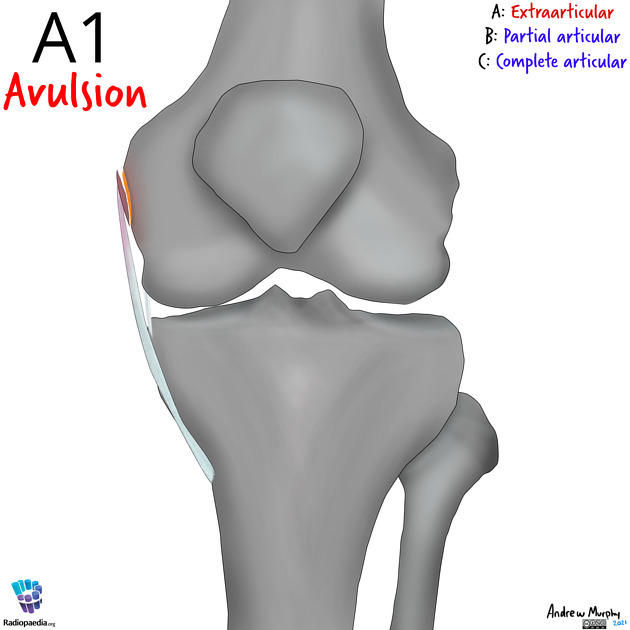
- type A: extraarticular
- type B: partial articular, the fracture is involving one part of the articular surface, yet the rest of the joint is still attached to the metaphysis and diaphysis
- type C: complete articular, the fracture is distributing the joint surface and separated from the diaphysis
From the case:
AO classification of distal femur fractures (illustration)

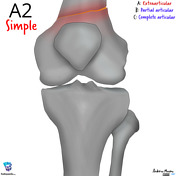
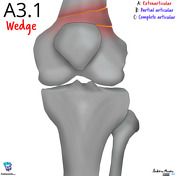
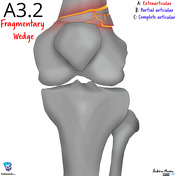
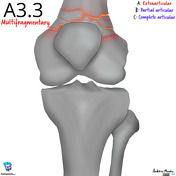
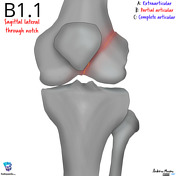
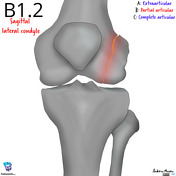
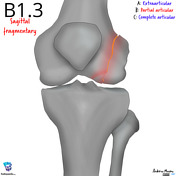
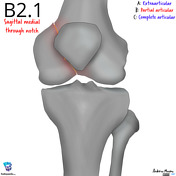
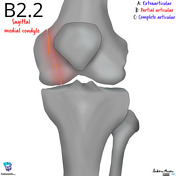
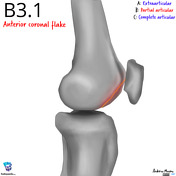
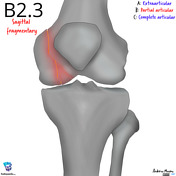
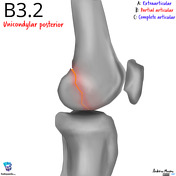
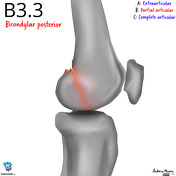
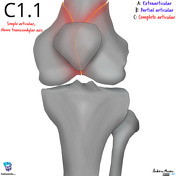
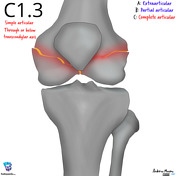
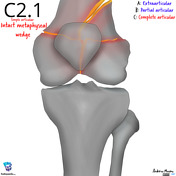
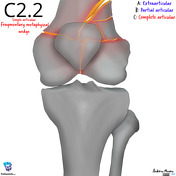
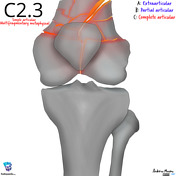
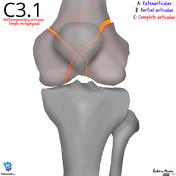
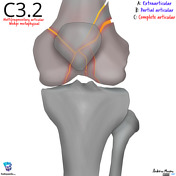
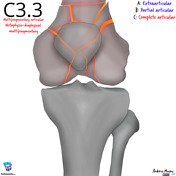
Download
Info

- type A: extraarticular
- type B: partial articular, the fracture is involving one part of the articular surface, yet the rest of the joint is still attached to the metaphysis and diaphysis
- type C: complete articular, the fracture is distributing the joint surface and separated from the diaphysis
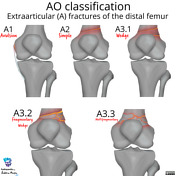
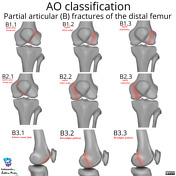
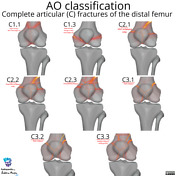
Download
Info
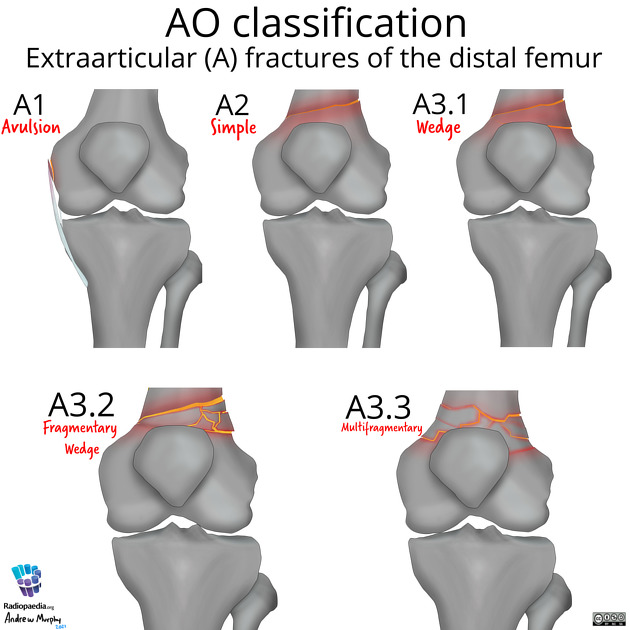
- type A: extraarticular
- type B: partial articular, the fracture is involving one part of the articular surface, yet the rest of the joint is still attached to the metaphysis and diaphysis
- type C: complete articular, the fracture is distributing the joint surface and separated from the diaphysis
Case Discussion
The AO classification divides the distal femoral fractures into three groups, A, B and C with complexity and severity increasing 1.
- type A: extraarticular
- type B: partial articular, the fracture is involving one part of the articular surface, yet the rest of the joint is still attached to the metaphysis and diaphysis
- type C: complete articular, the fracture is distributing the joint surface and separated from the diaphysis




 Unable to process the form. Check for errors and try again.
Unable to process the form. Check for errors and try again.